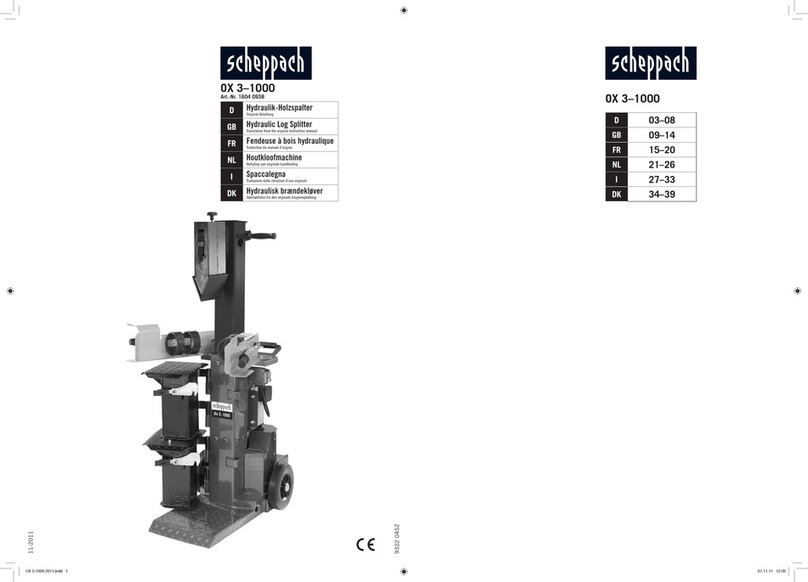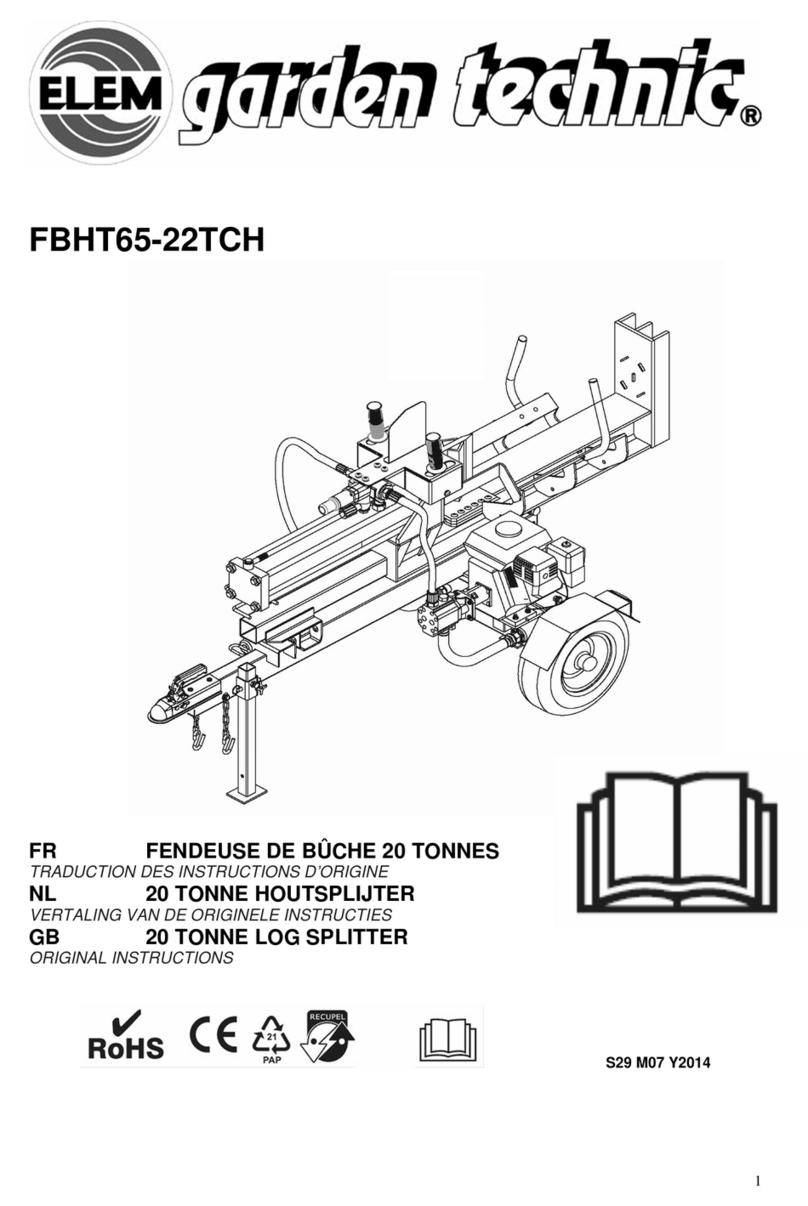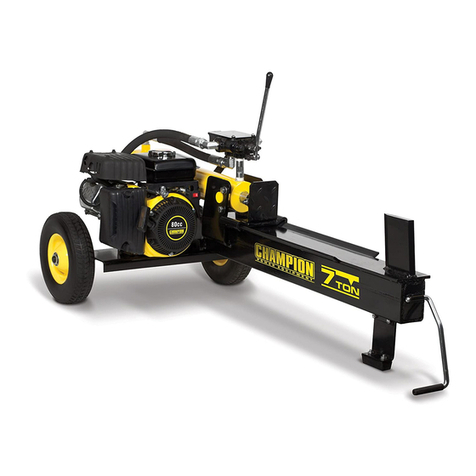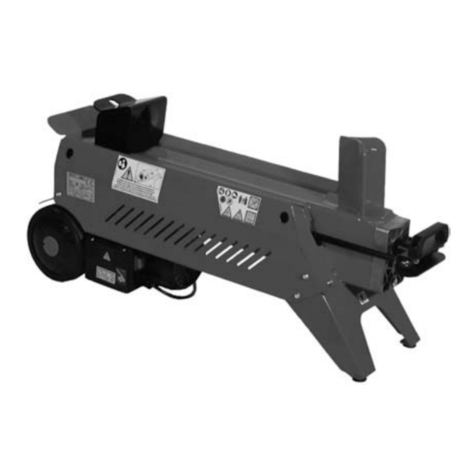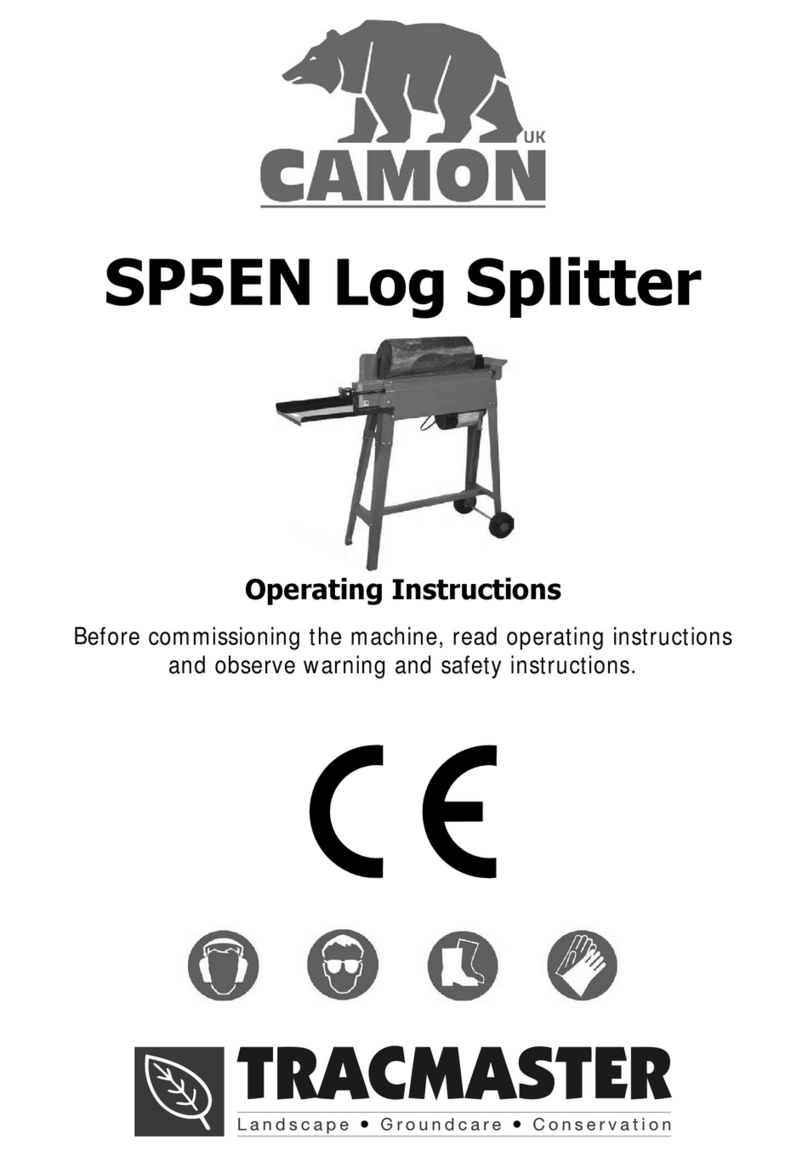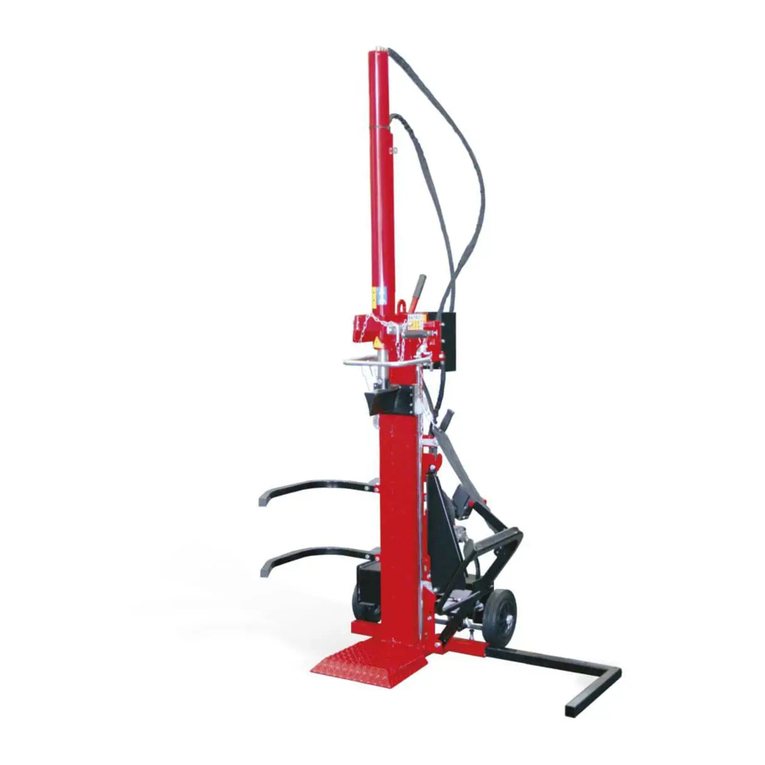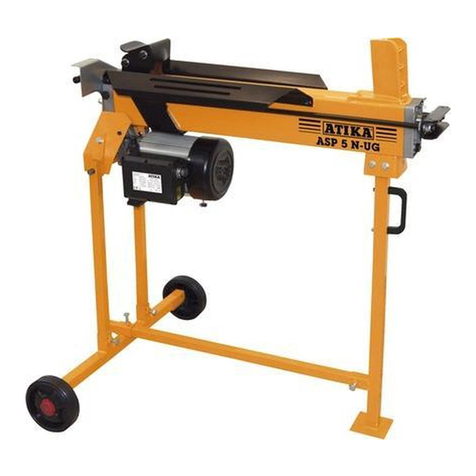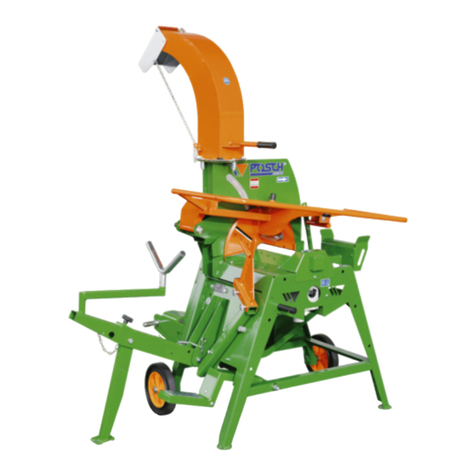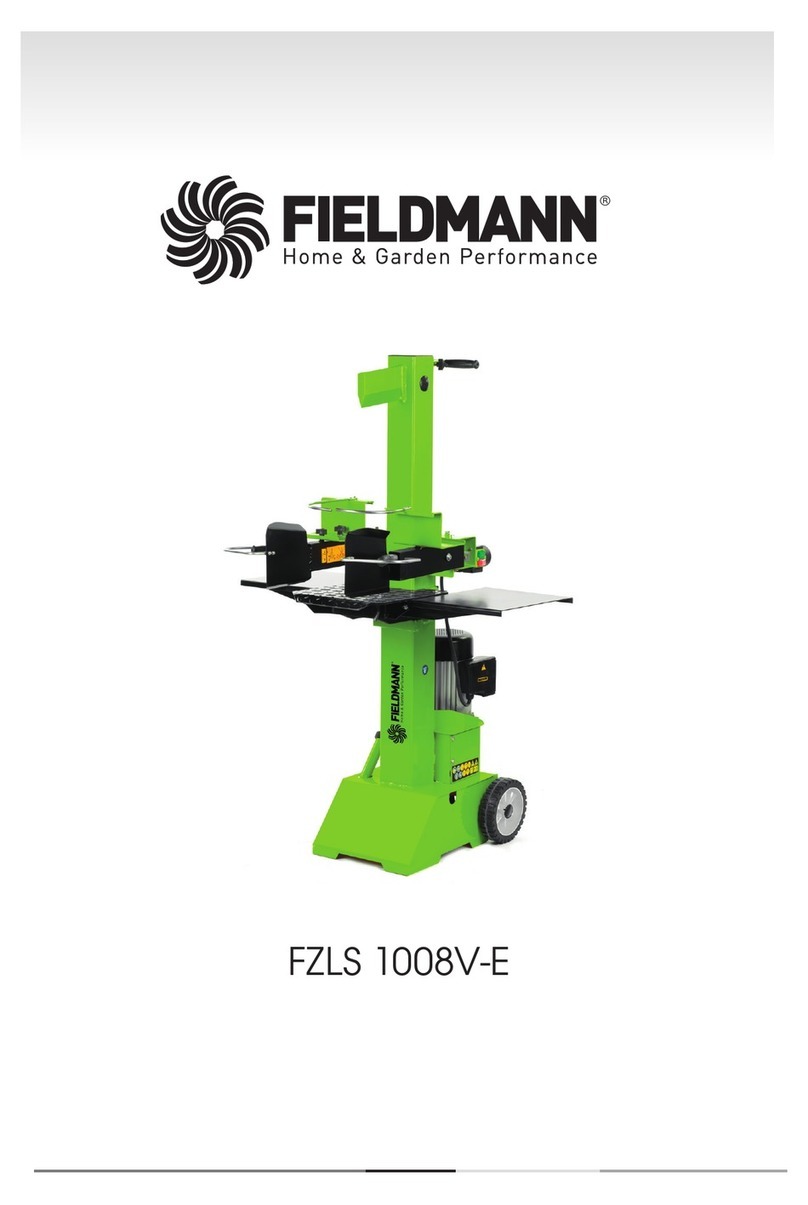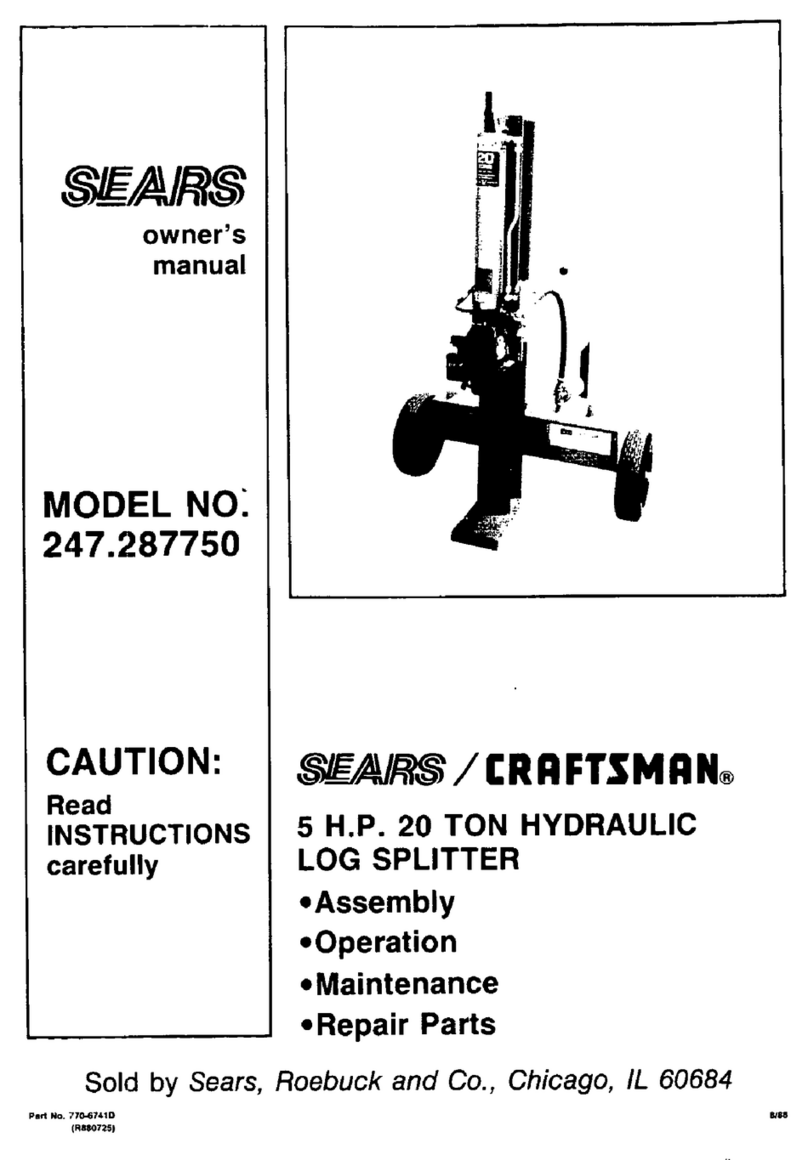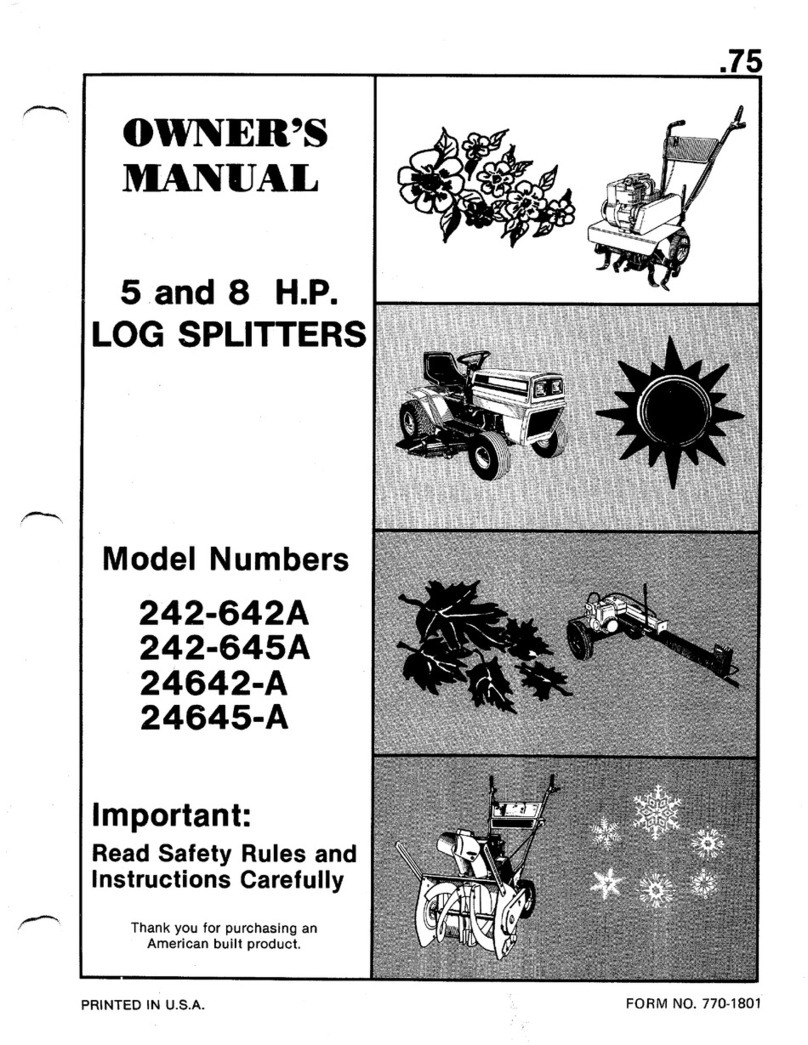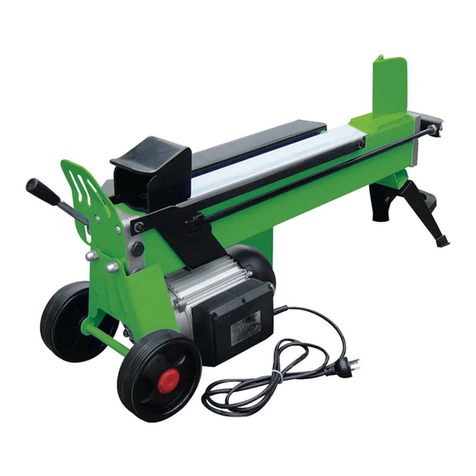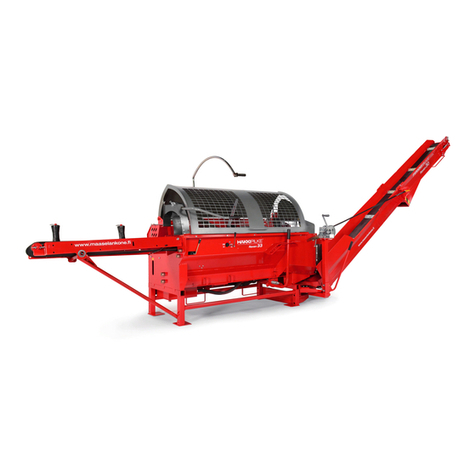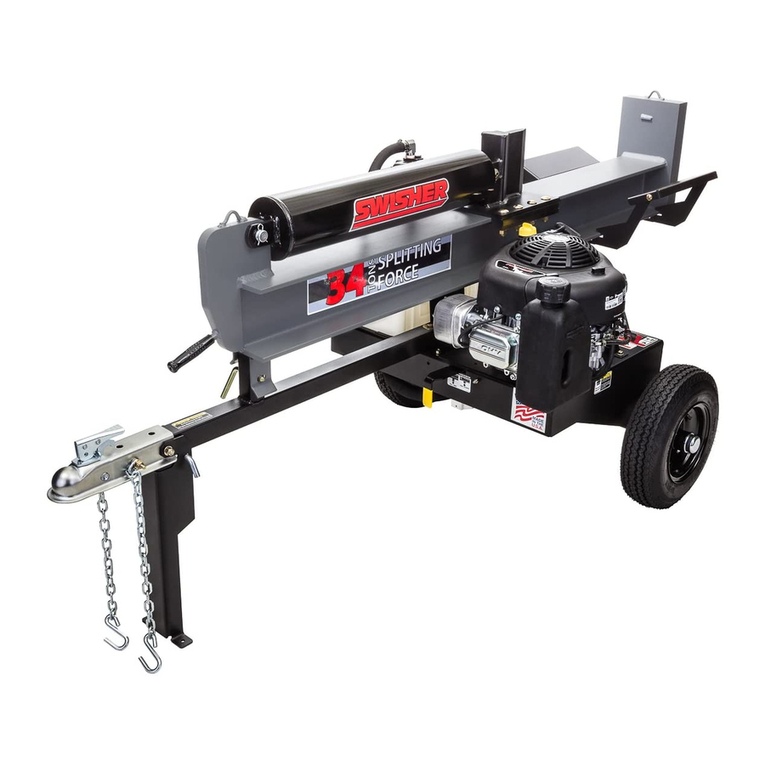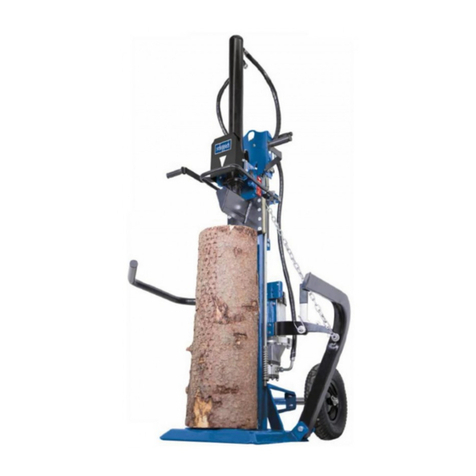Turbo7/0213 Page 7
Explanation of Symbols Used
Standard graphic symbols are used on all machines in order to ensure complete safety of all parts of
the Log Splitter. As these symbols are very important, read the information below carefully.
It is necessary to read carefully the entire
use and maintenance manual of the
machine, before using it.
It is obligatory to wear safety footwear at
all times to provide protection against the
risk of logs accidentally falling on feet.
It is obligatory at all times to wear gloves
which protect the hands against chips
and splinters which may be produced
during work.
It is obligatory at all times to wear
goggles which protects the eyes against
chips and splinters which may be
produced during work.
The log splitter must be used by one
person alone.
It is forbidden to stand in the range of
action of the machine, apart from the
operator, no other person or animal may
be present within a radius of 5 metres
from the machine.
Dumping of used oil in the environment
is forbidden. The oil must be disposed
of according to current legislation in the
country where this operation is carried out.
Danger of cutting or crushing of the
hand: never touch hazardous areas while
the wedge is moving.
Warning: always pay attention to the
movement of the log pusher.
Warning: never remove a log trapped in
the wedge with your hands.
Warning: Before carrying out any
maintenance operation described in
this manual, disconnect the plug of the
machine.
Warning: voltage as indicated on the
rating plate.
Machines tted with electrical parts must
not be disposed of as general waste
but must be separated for disposal and
deposited at authorised collection points.
Regulating speed with the control lever.
In the rst position, about halfway down,
the log splitter is faster but less powerful;
with the lever pressed all the way, the
machine slows down but splits the log at
full power.
Log splitter start button.
